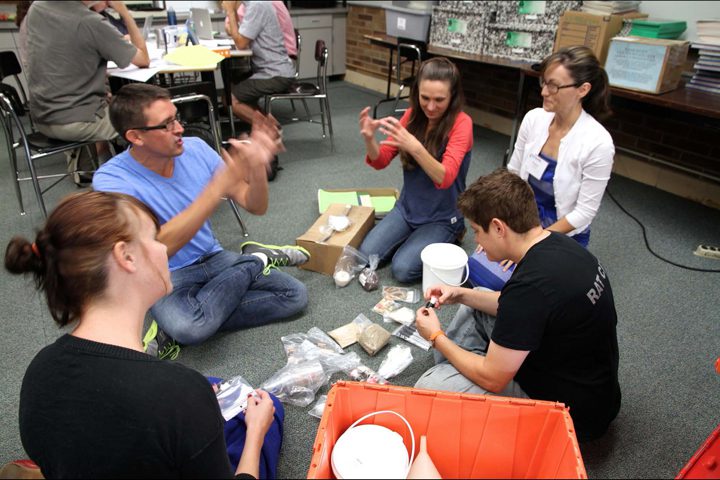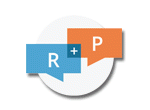Using curriculum adaptation as a strategy to help teachers learn about NGSS and developing aligned instructional materials

- Teachers should analyze and adapt tasks in existing curriculum to support student engagement in the science and engineering practices.
- District staff and PD providers should learn about how to support networks of teachers as they engage in curriculum adaptation and share the resulting instructional materials.
- School leaders should support efforts to engage teachers in adapting, testing, and refining enhancements of currently-adopted curriculum materials.
What is the Issue?
Using curriculum materials aligned to NGSS is a crucial part of implementation, but there is very little aligned curricula to choose from, districts may not have resources to purchase it, and teachers typically don't have time to develop new curriculum from scratch. However, teachers can effectively adapt existing curriculum materials and instruction to better align with NGSS. This can help them learn about important parts of the NGSS vision for learning—and result in instructional materials for use across classrooms.
Authors:
TAMMY COOK-ENDRES, ALISHA TAYLOR & BILL PENUEL
Things to Think About
- How will you identify teachers or schools to involve in this kind of PD effort? What grade-level / grade-band will you focus on?
- What curriculum materials are strong candidates for adapatation? Which NGSS practices and DCIs will you focus on? Why?
- How can you structure the PD to let teachers leverage their expertise and also learn about new approaches and ideas?
- How will you network teachers to allow them to test, iterate and refine their enhancements? When will you share the enhancements with others?
Things to Consider
- Curriculum adaptation is an important form of professional development that promotes buy-in, builds understanding of key features of learning and teaching, and improves student learning.
- Select an instructional model. Many instructional models fit NGSS. What matters is that there is a coherent model of teaching that guides the adaptation of materials and that also guides teaching.
- Focus the work. It's not possible to attend to all curriculum units at once, and to do so would be overwhelming and lead to shallow changes. Target lessons for deep enhancement where students can make sense of phenomena, data, or ideas. Identify specific science and engineering practices to integrate into these lessons.
- Follow a backward design approach to adaptation for NGSS with teams of teachers working in small collaborative groups. The curriculum enhancements can be co-designed with educational researchers with curriculum development experience.
- Attend to emotions, identity, and expertise. The emotional attachment teachers may feel towards particular activities can make them challenging to give up or change. Directly address these issues, develop trust, and create a safe place where they can take risks and try new ways of engaging students in practices. Leverage teacher expertise in ways that can focus and drive the design work.
- Improve the enhancements over time. Have the teams use, study, and refine the enhancements iteratively across their classrooms.
"Curriculum adaptation is immediately relevant to the work of teaching while it also prepares teachers for future learning." — Dan Gallagher, Seattle Public Schools
"What is particularly important is that teachers develop the capacity to design sequences of instruction by learning a set of pedagogical principles that can guide their selection or adaptation of materials." — Penuel, Gallagher & Moorthy (2011)
Attending to Equity
- Design teams should be composed of teachers who serve students from widely varying backgrounds and communities/neighborhoods. When exploring ways to redesign units, consider how best to identify and leverage students' diversity of interests, experiences, and knowledge in defining learner "entry points" into units.
Recommended Actions You Can Take
- Learn about an NGSS curriculum adaptation PD project in Seattle and Renton School Districts as a model of this kind of PD.
- Learn about Brian Reiser's coherent story-line approach to Adapting Curriculum Materials for NGSS.
- Review research on the value of PD for curriculum adaptation: Penuel, W. R., Gallagher, L.P., & Moorthy, S. (2011).
- Review research on curriculum analysis as PD: Roth, K. J., Garnier, H. E., Chen, C., Lemmens, M., Schwille, K., & Wickler, N. I. Z. (2011).
ALSO SEE STEM TEACHING TOOLS
STEM Teaching Tools content copyright 2014-22 UW Institute for Science + Math Education. All rights reserved.
This site is primarily funded by the National Science Foundation (NSF) through Award #1920249 (previously through Awards #1238253 and #1854059). Opinions expressed are not those of any funding agency.
Work is licensed under a Creative Commons Attribution-ShareAlike 4.0 Unported License. Others may adapt with attribution. Funded by the National Science Foundation (NSF). Opinions expressed are not those of any funding agency.


 Email Feedback
Email Feedback


